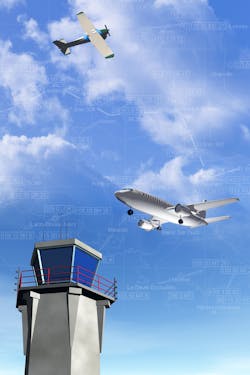Why we need global aviation security standards
I’ll admit it. The first time I went through one of the TSA’s advanced imaging technology stations (which use millimeter wave like L3’s ProVision units or backscatter like those from Rapiscan), I was a little taken back. Someone I don’t know was going to see me naked? Maybe I should have gone to the gym more often. But mostly, I was caught up in the miniscule panic of the moment. Do I have everything out of my pockets? Did I have to remove my wallet? Turns out I did. Should I remove my belt? Yes, again. But I can keep my watch on? Actually, that Timex watch ended up getting me a quick post-scan wrist check by a friendly agent who wanted to make sure that my watch that “takes a licking and keeps on ticking” wasn’t actually ticking for the wrong reason.
The hubbub of citizens advocating against these units has largely subsided – although not necessarily in Portland, Ore., where a man fully disrobed last month for the checkpoint and then refused to put his clothes back on when asked to do so. I remember all the advocacy against these units; that they were going to give us cancer, that they would see our privates, that they were unconstitutional because they violated the fourth amendment’s protection “against unreasonable searches and seizures”.
But we’ve largely acquiesced to this AIT technology, which Homeland Security officials say could have detected the Christmas Day underwear plot bomber of 2009 and likely would have detected the advanced underwear plot that was exposed last week in a daring bit of intelligence that involved a U.S. agent penetrating a terror cell. (Side note: there are differing opinions on whether the non-metallic bomb would have been detected by AIT.) The challenge today is not whether we accept those machines, but whether we can get them in place around the world. While we have a very standardized approach to aviation security in the United States (and in Europe), those standards aren’t global, and that means weaknesses in the trusted chain of aviation security. The issue with the underwear plot bomber of 2009 was that he entered the aviation environment in a location without these AIT units (although there were some of those units in operation at that airport – just not pervasively deployed).
The problem, at one level, isn’t just standards and getting foreign aviation operators to know what security technology works and what doesn’t. It’s sometimes about money. A thorough airport security checkpoint implementation – like the kind you find here in the U.S. – is costly. The scanners get little downtime so they have to be extremely high quality, and they have to be manned with the appropriate personnel and designed into the facility in such a way that there aren’t roundabout ways to circumvent the screened access model. These are expensive changes in an aviation environment that lives on shoestring profits in nations that don’t have the level of oversight we’ve implemented. As someone who has thrown a backpack on my shoulder and traveled around the world, I can tell you that it’s rare to see quality airport security protocols in place in many second and third-world airport facilities.
So, what do we do? I’d argue that there is now a need for a global aviation security standard that would review all facility access flow designs and all screening procedures to ensure that the steel chain of aviation security doesn’t have some links made of string. I’m not alone in this call for global standards. The International Air Transport Association (IATA) has also called for this kind of standards development. The International Civil Aviation Organization (ICAO) has also started tackling this project – and received endorsement from TSA’s John Pistole for the ICAO Declaration on Aviation Security. Creating the standards is the first process, but if there’s not an international standard on enforcement, then the standards are nothing more than hopeful documents. But what the new underwear bomb plot teaches us is that the terror cells aren’t giving up on attacking our aviation systems, and that means we can’t rest on the laurels because we are or have already deployed scanners at even lesser airports like those in Fargo, Billings, Montgomery and Augusta.
About the Author

Geoff Kohl
Editorial Director/Editor-in-Chief/Associate Publisher
Geoff Kohl is the Marketing Director for the Security Industry Association (SIA). He is the former Editor-in-Chief of SecurityInfoWatch.com
